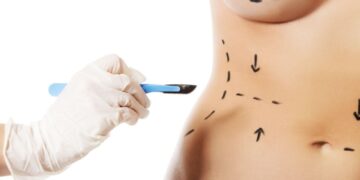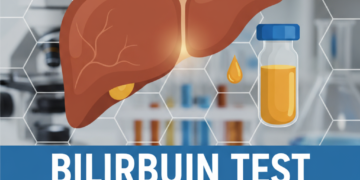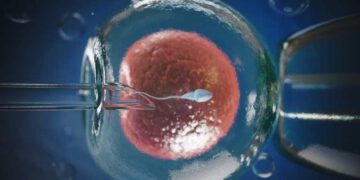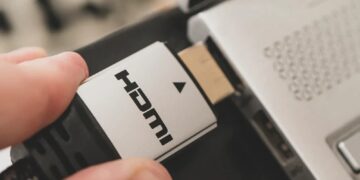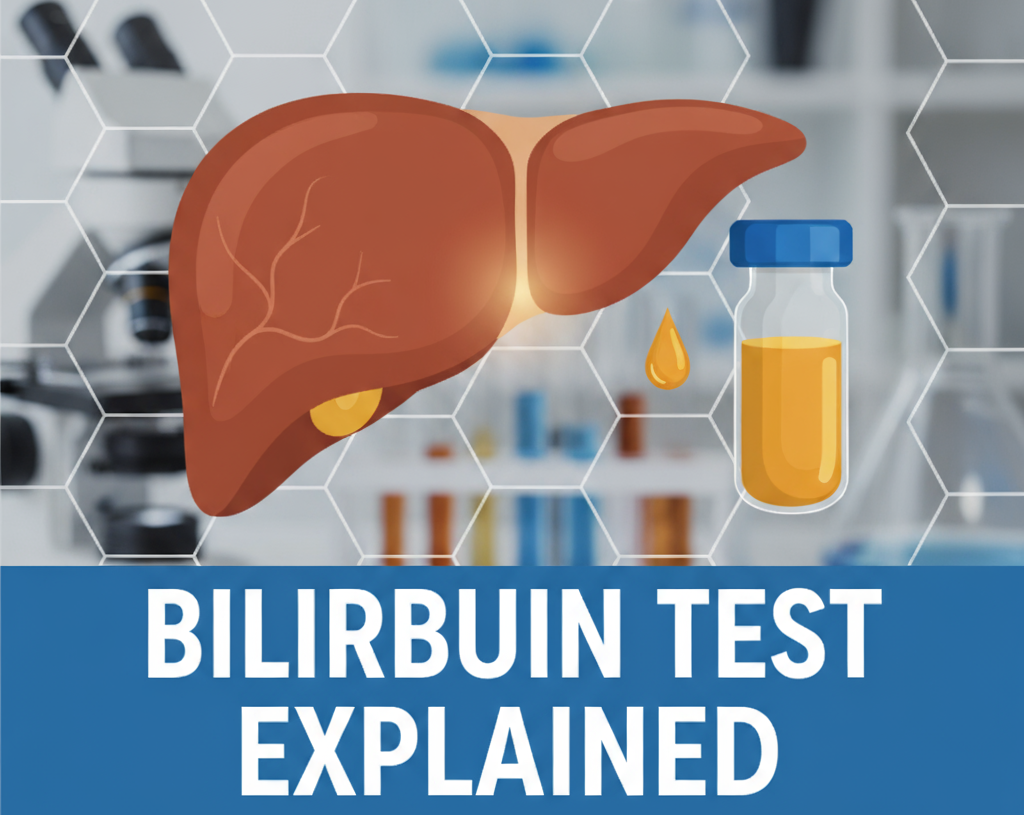🩺 What is Bilirubin?
Bilirubin is a yellowish substance formed in the body when red blood cells break down naturally. It is processed by the liver and eventually removed from the body through bile and stool. Measuring bilirubin levels helps doctors assess the health of the liver, gallbladder, and red blood cells. Since bilirubin levels directly reflect liver performance, abnormalities in its value often point toward underlying health concerns such as hepatitis, jaundice, or bile duct obstruction.
🌟 Why is the Bilirubin Test Important?
The bilirubin test plays a critical role in detecting liver problems early. It helps in:
- Diagnosing jaundice in both adults and newborns.
- Monitoring liver diseases such as cirrhosis and hepatitis.
- Identifying blockages in bile ducts.
- Checking for hemolytic anemia, where red blood cells are destroyed faster than normal.
This makes the test an indispensable diagnostic tool for doctors in routine check-ups and emergency evaluations.
📊 Understanding Bilirubin Normal Range
Knowing the bilirubin normal range is vital for accurate diagnosis. Deviations from the range can signal potential health concerns.
🔹 Bilirubin Normal Value in Adults
- Total Bilirubin Normal Range: 0.3 – 1.2 mg/dL
- Direct (Conjugated) Bilirubin: 0.1 – 0.3 mg/dL
- Indirect (Unconjugated) Bilirubin: 0.2 – 0.8 mg/dL
| Type of Bilirubin | Normal Value (mg/dL) |
| Total Bilirubin | 0.3 – 1.2 |
| Direct Bilirubin | 0.1 – 0.3 |
| Indirect Bilirubin | 0.2 – 0.8 |
🔹 Bilirubin Levels in Children and Newborns
- In children, the normal value is usually similar to adults.
- In newborns, higher levels are common due to immature liver function. Levels up to 5 mg/dL can be normal in the first few days after birth. However, persistent elevation may indicate neonatal jaundice, requiring medical attention.
🧪 Types of Bilirubin Tests
Direct (Conjugated) Bilirubin
This test measures bilirubin already processed by the liver. High levels may indicate liver disease or bile duct obstruction.
Also Read : First-Time IVF Journey: A Complete Guide for Pune Couples
Indirect (Unconjugated) Bilirubin
This measures bilirubin before it reaches the liver. Elevated values suggest excessive red blood cell breakdown or problems with bilirubin processing.
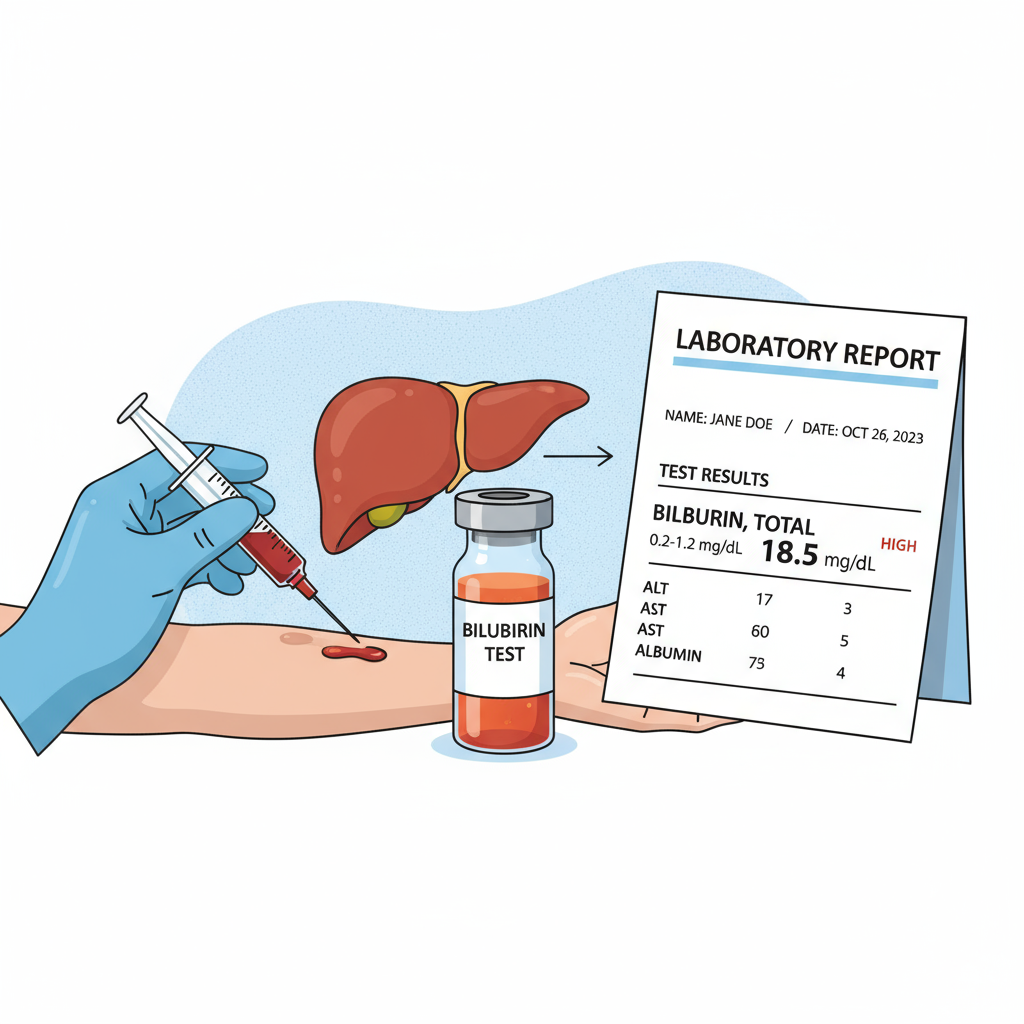
🩸 Procedure of a Bilirubin Test
Before the Test
- Fasting for 4–6 hours may be recommended.
- Inform your doctor about medications, as some affect results.
During the Test
- A blood sample is drawn from a vein in the arm.
- The process takes only a few minutes.
After the Test
- Mild bruising may occur at the puncture site.
- Results are usually available within 24 hours.
⚖️ Factors Affecting Bilirubin Normal Range
Several factors can influence bilirubin levels, including:
- Medications like antibiotics or birth control pills.
- Alcohol consumption.
- Dehydration.
- Fasting or crash diets.
- Strenuous exercise.
🚨 Causes of High Bilirubin Levels
High bilirubin (hyperbilirubinemia) may result from:
- Hepatitis (liver inflammation).
- Cirrhosis (scarring of the liver).
- Gallstones blocking bile ducts.
- Hemolytic anemia.
- Liver infections.
🔻 Causes of Low Bilirubin Levels
Though rare, low bilirubin levels may be linked to:
- Excessive antioxidant use.
- Certain enzymatic disorders.
- Improper lab readings.
⚠️ Symptoms of Abnormal Bilirubin Levels
Common signs include:
- Yellowing of the skin and eyes (jaundice).
- Dark urine.
- Fatigue.
- Abdominal pain.
- Nausea and vomiting.
🏥 Bilirubin Test and Liver Function
Since the liver processes bilirubin, this test is often included in Liver Function Tests (LFTs). Abnormal bilirubin levels may indicate that the liver isn’t working properly. Doctors often combine this test with ALT, AST, ALP, and albumin tests for a complete picture.
🍎 Lifestyle and Diet for Healthy Bilirubin Levels
- Eat a balanced diet with fruits, vegetables, and lean proteins.
- Avoid alcohol to reduce stress on the liver.
- Stay hydrated to aid bilirubin excretion.
- Exercise regularly to maintain overall liver health.
✅ Conclusion
The bilirubin test is an essential diagnostic tool for evaluating liver function, red blood cell health, and bile duct performance. Understanding the bilirubin normal range helps patients and doctors identify issues early, ensuring timely treatment. If you notice symptoms like jaundice, fatigue, or dark urine, consult your healthcare provider for testing and guidance. Maintaining a healthy lifestyle, balanced diet, and regular check-ups can help keep your bilirubin levels within the normal value.
❓ FAQs
Q1. What is the bilirubin normal value?
The bilirubin normal value for adults is 0.3 – 1.2 mg/dL.
Q2. Can high bilirubin mean liver cancer?
Not always. While it can indicate serious liver conditions, high bilirubin alone isn’t proof of liver cancer. Further tests are required.
Q3. Do newborns need a bilirubin test?
Yes, newborns often undergo bilirubin tests to check for neonatal jaundice
Q4. How often should bilirubin be checked?
Frequency depends on your health condition. People with liver disease may need regular monitoring.
Q5. Can diet lower bilirubin levels?
Yes, avoiding alcohol and eating a liver-friendly diet can help maintain normal levels.
Q6. Is bilirubin test painful?
No, it’s a simple blood test with minor discomfort.


